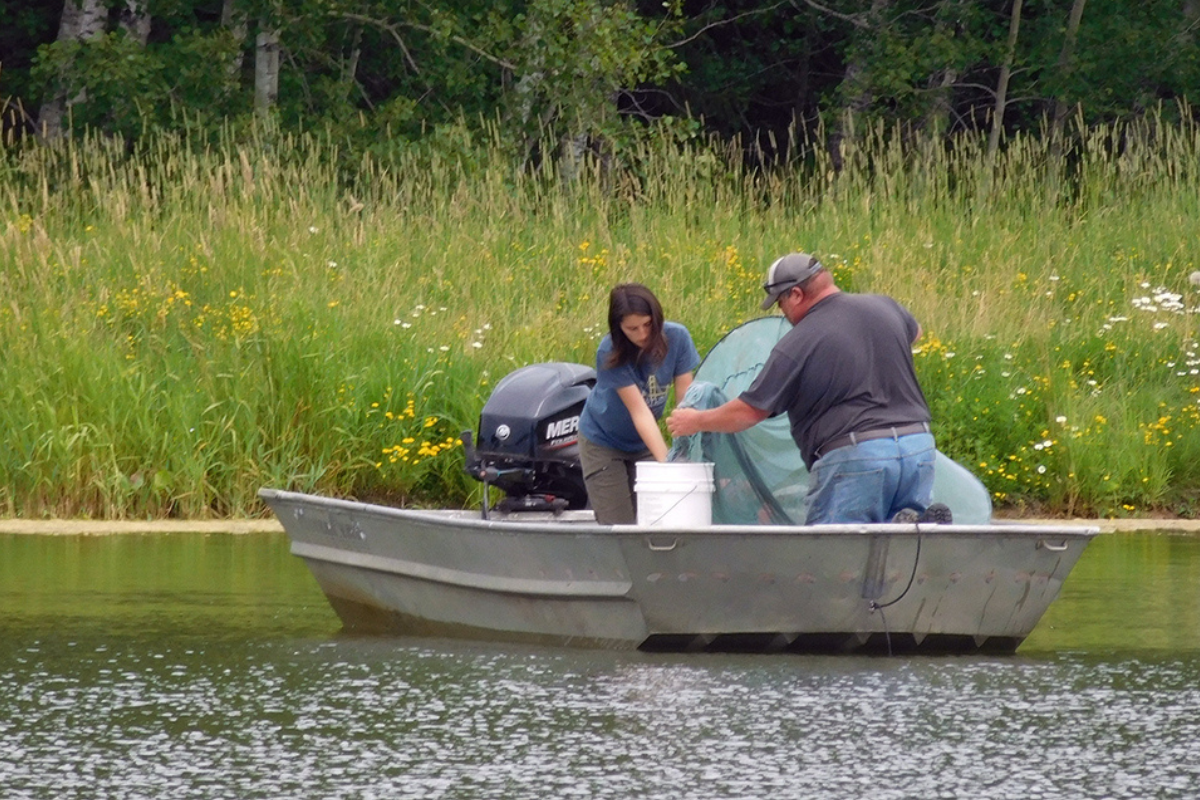July 26, 2022
SAULT STE. MARIE, Mich. — Sault Tribe Natural Resource Department biologists are exploring whitefish rearing methods at tribal hatcheries and ponds, looking for ways to stock the fish in the future. The tribe’s Fisheries Management Program started an experimental project to rear whitefish in 2018, funded by the Great Lakes Restoration Initiative.
"Whitefish have been one of the species to feel the biggest impacts from invasive species such as zebra and quagga mussels. These mussels have reduced the available food for whitefish to be able to eat at very early life stages," Sault Tribe Lead Biologist Brad Silet said.
"As a cold adapted species with spawning dependent on temperature, it is uncertain what will happen to whitefish populations with continually rising water temperatures in the Great Lakes,” Silet added.
As part of the effort to stock whitefish, Sault Tribe collected whitefish brood stock from Lake Huron in late 2019, 2020, and 2021. These fish were spawned out at the Nunns Creek Fisheries Enhancement Facility near Hessel, Mich. The eggs were hatched onsite, and the fish were raised there throughout the winter and into the summer.
The Fisheries team used multiple methods to raise the fish, looking at the feasibility of rearing whitefish to different sizes and life stages. In 2021, whitefish were then reared in an earthen pond with promising results — the 28,000 1-inch whitefish grew fast and showed natural food gathering abilities. Water temperatures, oxygen levels, phytoplankton, and zooplankton were checked each week. In October 2021 the pond was netted to retrieve the surviving fish, with 7,747 whitefish that averaged nearly 6.5 inches and weighing over an ounce each.
The fish came out of the pond 3.5 times longer than they went in and an impressive 30 times heavier — the largest whitefish reared in a hatchery setting ever in North America, according to Sault Tribe Lead Fisheries Biologist Brad Silet.
Silet said the tribe’s whitefish program has gotten the attention of the regional Bureau of Indian Affairs office, which acknowledged the advancements the tribe has had in the rearing of whitefish.
The whitefish rearing program has also gained international attention for this success and with numerous partners, including the Nature Conservancy, hopes to continue and expand their work with the project.
Over the next three years, the Nature Conservancy awarded a $1 million grant from the DTE Foundation for environmental efforts across Michigan. It is partnering with tribal governments and state agencies to pilot an experimental effort to restore whitefish in rivers flowing into Lakes Michigan and Huron. The tribes include the Sault Tribe and the Little Traverse Bay Bands of Odawa Indians.
Sault Tribe’s Natural Resources Department is also looking into local rivers and streams for any remaining populations of spawning whitefish. These populations disappeared from rivers around the same time as the heavy logging a century ago. Using traditional ecological knowledge, the department is looking at rivers that were known to traditionally hold whitefish. If populations are not found, an option may be to stock these rivers with either fish or fertilized eggs. Streams where whitefish might be stocked include the Carp, Pine, and Bear rivers.
The Fisheries Management Program is the biological program within the Sault Tribe Natural Resource Department charged with implementing fisheries management aspects of the 2000 and 2007 Consent Decrees. Fisheries has four focus areas that all play an important role in protecting and enhancing tribal members’ ability to access treaty fishing rights: inter-agency fisheries management, harvest management and assessment, adaptive ecosystem management, and public outreach.

